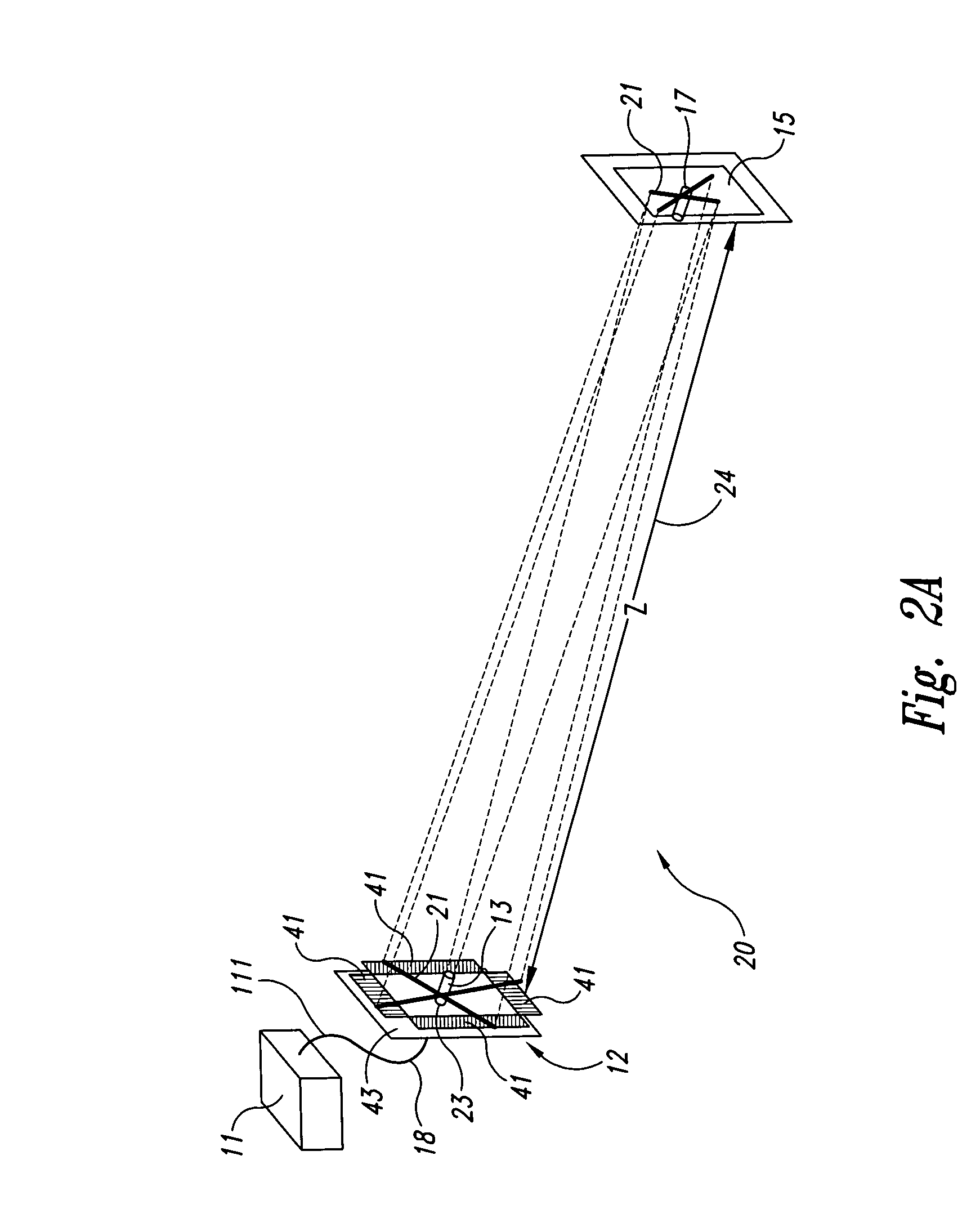Metrology system and method for measuring five degrees-of-freedom for a point target
a technology of point targets and metals, applied in the field of metalrology systems, can solve the problems of increasing the difficulty of maintaining the alignment of elements using rigid structural designs alone, the relative positioning between the reflector and feed components becomes increasingly difficult to maintain and/or control, and achieves the effect of facilitating the active compensation of large spacecraft systems and structures
- Summary
- Abstract
- Description
- Claims
- Application Information
AI Technical Summary
Benefits of technology
Problems solved by technology
Method used
Image
Examples
Embodiment Construction
[0030]The following detailed description is of the best currently contemplated modes of carrying out the invention. The description is not to be taken in a limiting sense, but is made merely for the purpose of illustrating the general principles of the invention, since the scope of the invention is best defined by the appended claims.
[0031]Broadly, an embodiment of the present invention provides a metrology system that enables determination of the relative orientation of one point relative to another with five degrees-of-freedom. Contrary to the known prior art, the metrology system as in one embodiment of the present invention includes a second collimator that generates a second laser crosshair enabling differentiation of pitch and yaw rotation from translation and roll rotation. The metrology system as in one embodiment of the present invention may be used, for example, for large spacecraft systems and structures having a large fixed reflector to determine the location and orienta...
PUM
 Login to View More
Login to View More Abstract
Description
Claims
Application Information
 Login to View More
Login to View More - R&D
- Intellectual Property
- Life Sciences
- Materials
- Tech Scout
- Unparalleled Data Quality
- Higher Quality Content
- 60% Fewer Hallucinations
Browse by: Latest US Patents, China's latest patents, Technical Efficacy Thesaurus, Application Domain, Technology Topic, Popular Technical Reports.
© 2025 PatSnap. All rights reserved.Legal|Privacy policy|Modern Slavery Act Transparency Statement|Sitemap|About US| Contact US: help@patsnap.com



